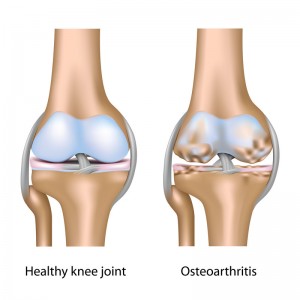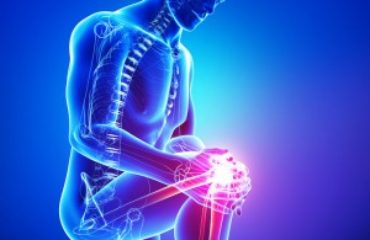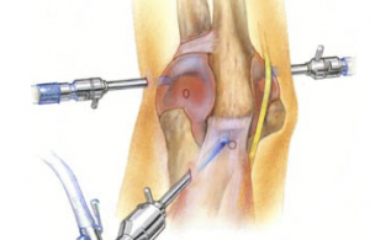Cartilage regeneration is an attempt to restore damaged joint cartilage. This can be done using several techniques. This new technique has been successfully performed in Europe for years, and is beginning to be used more in the United States.
Every year, more than 12 million people go to the doctor with knee pain, and of these, half have damage to the articular cartilage. When the cartilage is damaged or deteriorates, the knee cannot go through regular range of motion, and without a knee replacement, this will worsen over time. However, there are new procedures available for cartilage regeneration, which can be used in replace of traditional surgery.
Articular Cartilage
Cartilage is a 3-5 mm thick tissue that covers bone ends and surfaces inside of joints. This structure gives low friction articulation, but is easily damaged in accidents, such as kneecap dislocations or ACL tears. The matrix of the cartilage is made of proteoglycans, collagens, and proteins.
This highly-structured material is about 85 percent water, which decreases to 70 percent in aging adults. The only cells in the matrix are chondrocytes, which produce and maintain t he cartilage. The purpose of articular cartilage is to serve as a shock absorber (cushion) in the joint and to line the ends of the bones that come together to form the joint. Damage to this cartilage occurs from:
he cartilage. The purpose of articular cartilage is to serve as a shock absorber (cushion) in the joint and to line the ends of the bones that come together to form the joint. Damage to this cartilage occurs from:
- Injury to the joint
- Avascular necrosis
- Osteoarthritis
- Osteochodritis dissecans
- Rheumatoid arthritis
Candidates for Cartilage Regeneration Procedures
Cartilage regeneration is not a procedure for anyone with bone-one-bone arthritis. However, this procedure is optimal for people who are wishing to avoid and bypass knee replacement surgery. A mechanical implant only lasts from 10 to 20 years, so young patients often opt for other alternatives.
Most Phoenix orthopedic surgeons attempt to delay knee replacement surgery until the patient is older than 60 years if possible. Cartilage regeneration is best for:
- Young, active people who are not candidates for joint replacement
- People with joint diseases or injuries to the joint
Techniques of Cartilage Regeneration
Joints with cartilage damage are stiff, painful, and have limited range of motion. The main problem is that the cartilage is not able to regenerate and heal alone. The worn, damaged cartilage is useless unless it is replaced or repaired in some fashion. Various cartilage regeneration techniques are used. These include:
- Microfracture – The surgeon arthroscopically debrides the damaged cartilage and makes perforations in the bone to stimulate growth of fibrocartilage.

- Debridement – The surgeon removes lose cartilage by abrasion, which produces growth of the fibrous cartilage (scar tissue) and leads to bleeding on the bone surface.
- Autologous chondrocyte implantation – In this two-step procedure, the surgeon removes small pieces of cartilage from the knee, and tissue is sent to the laboratory for culture. After this, the lab grows cells that are directly implanted into the area of damaged cartilage. During the arthrotomy (open surgery), the new cells are injected into the periosteum (covering of the bone). This procedure is best for younger patients who have just one defect.
- Mosaicplasty – Also called osteochondral autograft transplantation surgery, with this procedure, the surgeon removes a plug of bone and cartilage that is healthy and inserts it in the damaged area. This procedure can also be done using multiple plugs, which creates a mosaic appearance (hence, the name).
Follow-Up Care
After a cartilage regeneration procedure, the Scottsdale orthopedic specialist will have you use crutches for up to 8 weeks. The recovery process will take around 4 to 6 months, and during this time, you will be under the care of a physical therapist. The surgeon will closely monitor the new cartilage to assure the healing process is going smoothly, and used advanced MRI imaging to document your progress.




